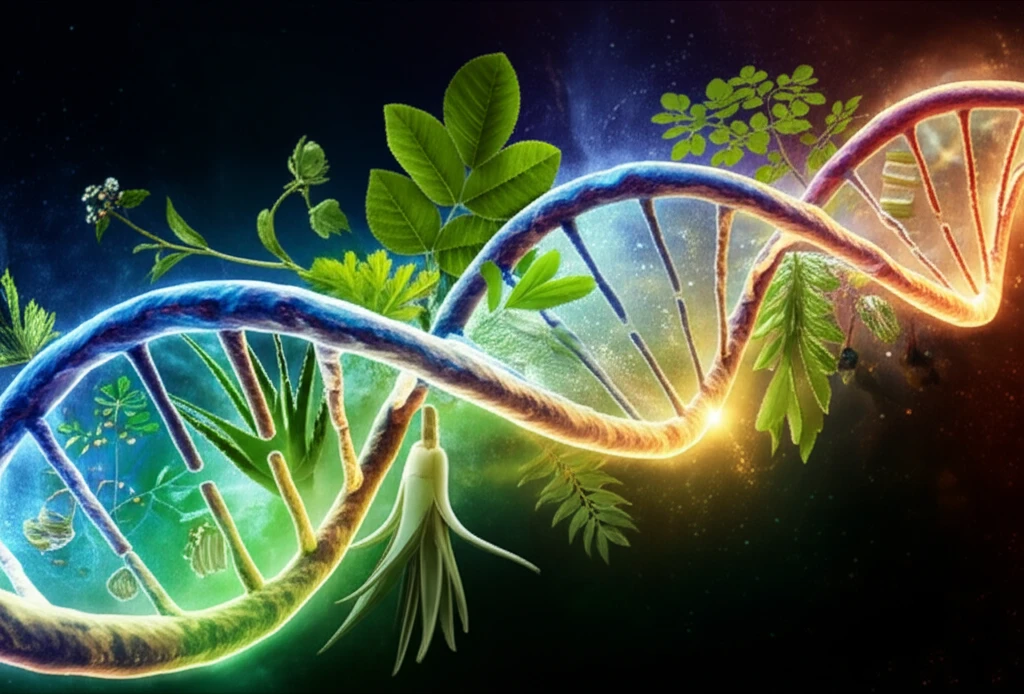
Can These Plants Fight Breast Cancer? New Research on Natural Cytotoxicity
"Exploring the potential of Nigerian medicinal plants to modulate key genes in breast cancer cells: A promising step towards natural cancer therapies."
Breast cancer remains a leading cause of cancer deaths among women worldwide, underscoring the urgent need for effective treatments. While conventional therapies have advanced, the exploration of natural compounds as potential anticancer agents is gaining momentum. Many plants used in traditional medicine are believed to possess anticancer properties, but rigorous scientific evaluation is crucial to validate these claims.
A recent study has focused on six plants native to Nigeria, examining their cytotoxic effects and their influence on key genes involved in cancer development. Specifically, researchers investigated how extracts from these plants affect the expression of the TP53 and retinoblastoma (Rb) genes in breast cancer cells. These genes play critical roles in suppressing tumor growth, and understanding how natural compounds can modulate their activity could pave the way for novel cancer therapies.
This article delves into the findings of this research, explaining how the plant extracts were prepared, how their cytotoxicity was assessed, and what effects they had on gene expression in breast cancer cell lines. By exploring the modulatory potentials of these plant extracts, we gain insights into potential new avenues for breast cancer treatment and prevention.
Unlocking the Anticancer Potential of Nigerian Plants

The study, published in the Journal of Pharmacognosy and Phytotherapy, selected six Nigerian plants known in traditional medicine for their purported anticancer properties: Tapinanthes bangwensis (Tba), Spilanthes filicaulis (Sfi), Anthocleista djalonensis (Adj), Curculigo pilosa (Cpi), Icacina trichantha (Itr), and Gladiolus psittacinus (Gps). Researchers prepared various extracts from these plants, including crude extracts and fractions obtained using different solvents like hexane, chloroform, and ethylacetate.
- Sfi-HF: Hexane fraction of Spilanthes filicaulis. Showed the highest cytotoxic effect on brine shrimps, with a low signal of p53 gene expression but a high intensity of Rb gene expression in MCF-7 cell lines.
- Gps-CE: Crude extract of Gladiolus psittacinus. Demonstrated a significant increase in TP53 gene expression and a high intensity of Rb gene expression.
Implications and Future Directions
This study provides valuable insights into the potential of Nigerian medicinal plants to combat breast cancer by modulating key genes involved in tumor suppression. The findings suggest that Sfi-HF and Gps-CE, in particular, warrant further investigation as potential sources of anticancer compounds.
However, it's important to note that this research was conducted in vitro, using breast cancer cell lines. Further studies are needed to confirm these findings in vivo, using animal models and ultimately, human clinical trials. Identifying the specific bioactive compounds responsible for the observed effects and understanding their mechanisms of action are also critical steps in developing effective cancer therapies.
As natural medicine and plant-based remedies gain traction, studies like this highlight the importance of rigorous scientific investigation. By bridging traditional knowledge with modern research, we can unlock the potential of natural compounds to address pressing health challenges like breast cancer.
